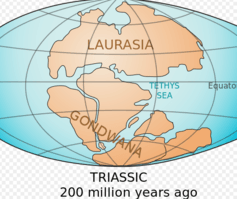Earthquake rocks Afghanistan and Pakistan – an area prone to magnitude 7 quakes

A devastating earthquake struck the region of north-east Afghanistan just after lunchtime on October 26, rocking communities as far away as Tajikistan, Pakistan and even India.A devastating earthquake struck the region of north-east Afghanistan just after lunchtime on October 26, rocking communities as far away as Tajikistan, Pakistan and even India.
The strong quake, estimated at magnitude 7.5 by the US Geological Survey (USGS), had its origins more than 200km deep beneath Earth's surface, and was felt as strong shaking across a very wide area. Casualties have been reported from across the region, with widespread landslips causing potential further damage to infrastructure.
So far it has been reported that , but this number is likely to rise.
The quake is the second large shake to hit the Alpine-Himalayan earthquake belt this year, following the one that devastated Nepal in April. A region stretching from the Mediterranean through Anatolia, Iran and Central Asia into the mountains of South-East Asia, the Alpine-Himalayan belt is the home of around a fifth of the world's largest earthquakes.
The earthquake was driven by collision between the Eurasian tectonic plate to the north and the Indian plate to the south. The area marks the scar of the closure of an ancient ocean, the , which once separated the continents of Gondwana, including most of the landmasses in today's southern hemisphere, and Laurasia, made up of most of the countries that are today in the northern hemisphere.
The Hindu Kush has experienced many such earthquakes before today, and this latest appears to follow closely the pattern of those of the past. by the USGS indicates that it was caused by a deep fault in which rocks thrust past each other instantaneously. They point out that seven earthquakes of magnitude 7 or more over the past century. Most recently the magnitude 7.4 earthquake, some 20km west of the latest event, in March 2002.
This type of deep fault, a near-vertical a thrust fault, is a process that has previously been associated with the tearing off of sections of ancient ocean floor sinking into the Earth's mantle beneath today's continent. Researchers have that earthquakes in the Hindu Kush can be caused by the break off of strips of such slabs, stretching and tearing free, on geological time scales, as they fall deep into the mantle.
Whatever the geological triggers for the quake, grieving communities will now be gathering themselves together and guarding against the inevitable aftershocks. With increased understanding of the risks that Earth poses along this seismic belt, it is important to be aware and prepare for future large earthquakes. If buildings are not to be destroyed time and again, it is important to adopt and adhere to construction and planning codes. A key step in promoting legal enforcement is educating the community about the risks, as well as how to respond as safely as possible during an earthquake.
Efforts such as the "" continue to , and have drawn attention to the tectonic forces that stand poised to strike along Tethys' former shores.
Source: The Conversation
This story is published courtesy of (under Creative Commons-Attribution/No derivatives).
![]()


















